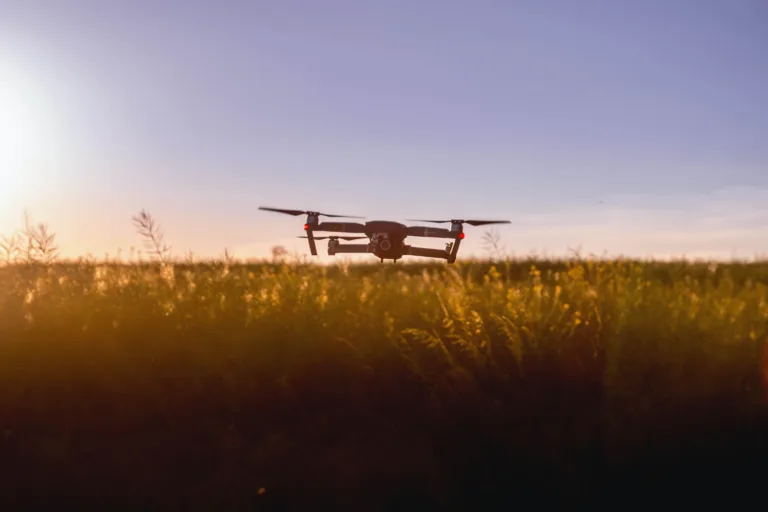Revolutionizing Farming with IoT
Modern agriculture is in the midst of a technological revolution. From smart tractors to drone surveillance, farmers are embracing innovative tools to enhance productivity. At the heart of these advances is the Internet of Things (IoT). Its capacity to connect devices and share data is transforming sectors globally, and agriculture is no exception. Especially, the rise of low power IoT networks is paving the way for smarter and more efficient farming practices.

Understanding the Basics: What is a Low Power IoT Network?
Low Power IoT networks are designed to transmit small amounts of data over long distances while consuming minimal energy. Devices connected to these networks can operate for years without requiring a battery change. This makes them perfect for agricultural settings, where devices may need to be left in the field without regular maintenance.
Why Low Power IoT Networks matters in Agriculture?
- Extended Battery Life: Farming environments are expansive, and it’s impractical to replace batteries frequently. Low power IoT devices can last for years, reducing maintenance costs and labor.
- Wide Coverage: These networks provide coverage over large areas, ensuring that even the most remote parts of a farm are connected.
- Cost-Efficient: Setting up a low power IoT network is relatively affordable, making it accessible for even small-scale farmers.
Applications in Smart Agriculture
- Soil Moisture Sensors: These sensors can provide real-time data on soil moisture levels, enabling farmers to optimize irrigation and conserve water.
- Livestock Tracking: Using low power IoT devices, farmers can monitor the health, location, and well-being of their livestock without the need for frequent manual checks.
- Climate Monitoring: By placing sensors across a farm, farmers can receive precise data on temperature, humidity, and other climatic factors. This assists in predicting diseases or pest attacks and helps in determining the optimal time for sowing or harvesting.
- Precision Farming: This involves analyzing data from various sensors to make informed decisions about crop rotation, fertilization, and pest control, leading to higher yields and quality.
- Automated Irrigation: Using data from soil moisture sensors, irrigation can be automated to ensure that crops receive the right amount of water at the right time.
Selecting the Right Low Power IoT Network for Agriculture
Not all low power IoT networks are created equal. Key considerations include:
- Range: Given the expansive nature of farms, it's crucial to select a network with sufficient range.
- Data Rate: Depending on the application, the required data rate might differ. For example, a soil moisture sensor might not need to send data as frequently as a livestock tracker.
- Energy Consumption: Opt for networks that promise the lowest energy consumption for the required data rate and range.
- Scalability: As a farm grows or incorporates more IoT devices, the network should be able to accommodate the increased load.
The Future: Integrating AI with Low Power IoT
The combination of Artificial Intelligence (AI) and IoT can further revolutionize agriculture. For instance, using AI algorithms, the data from soil sensors can predict when a crop is likely to need water several days in advance. Or, analyzing climate data can provide insights into potential pest infestations.
Benefits to the Broader Ecosystem
Smart agriculture isn’t just beneficial to farmers. It promises:
- Enhanced Food Security: With increased efficiency and productivity, food supply becomes more reliable.
- Environmental Protection: Optimized irrigation, reduced use of pesticides, and better resource management contribute to a reduced environmental footprint.
- Economic Growth: Enhanced yields and reduced costs lead to increased profitability for farmers, which can stimulate economic growth in agriculture-dependent regions.
Challenges and Considerations
While the potential is immense, there are challenges:
- Initial Setup Costs: Even though low power IoT networks are relatively affordable, the initial setup cost might still be prohibitive for some farmers.
- Connectivity Issues: In very remote areas, connectivity can be a concern, impacting the efficiency of the network.
- Data Security: Like any connected device, IoT devices in agriculture are susceptible to hacking, which could compromise data integrity.
The Green Revolution 2.0
The integration of low power IoT networks in agriculture heralds what can be termed as the "Green Revolution 2.0." It offers a future where farming is not only more efficient and productive but also environmentally conscious. As technology continues to advance, there’s no doubt that smart agriculture, powered by IoT, will be at the forefront of feeding the global population sustainably.
FREQUENTLY ASKED QUESTIONS
What is IoT in the context of agriculture?
IoT, or the Internet of Things, in agriculture refers to the interconnected network of devices, sensors, and systems that collect and share data to improve farming practices, efficiency, and productivity.
Why are low power IoT networks important for agriculture?
Low power IoT networks are crucial for agriculture because they consume minimal energy, ensuring that devices can function for extended periods without frequent battery replacements—ideal for vast farming environments.
How do soil moisture sensors work?
Soil moisture sensors measure the water content in the soil in real-time. They can be embedded in the ground at various depths, and they help farmers optimize irrigation and water conservation.
What is precision farming?
Precision farming is an approach that uses data from various sensors to make informed decisions about crop rotation, fertilization, pest control, and other farming practices to enhance yields and crop quality.
Can low power IoT networks cover large farms?
Yes, these networks are designed to provide coverage over large areas, ensuring that even remote parts of a farm are connected.
How does automated irrigation benefit farmers?
Automated irrigation uses data from soil moisture sensors to ensure crops receive the right amount of water at the right time, reducing water wastage and ensuring optimal crop growth.
What are the challenges faced in implementing low power IoT in agriculture?
Some challenges include the initial setup costs, potential connectivity issues in remote areas, and concerns about data security.
Can AI be integrated with low power IoT in agriculture?
Absolutely! Integrating AI with IoT can further enhance predictive analytics, such as forecasting water needs for crops or potential pest infestations based on climate data.
How does smart agriculture impact the environment?
Smart agriculture can lead to a reduced environmental footprint. It optimizes resource use, reduces the need for pesticides, and promotes sustainable farming practices.
Are low power IoT devices susceptible to hacking?
Like any connected device, IoT devices can be vulnerable to security breaches. It's essential to employ robust security measures to ensure data integrity and system safety.




